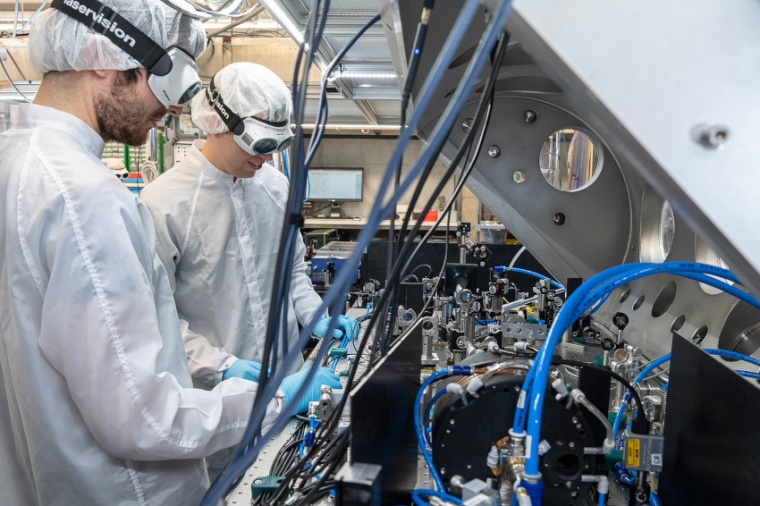Record-breaking laser pulses
New laser produces the strongest ultrashort laser pulses to date for precision measurements or materials processing.
Science and industry often require very short and strong pulses of laser light. These pulses can be used to machine materials or to create high harmonic frequencies up to X-rays, which can help to make extremely fast processes in the attosecond range visible. A team of researchers at ETH Zurich led by Ursula Keller have now set a new record for such laser pulses: at 550 watts of average power they surpass the previous maximum by more than fifty percent, which makes them the strongest pulses ever created by a laser oscillator. At the same time, they are extremely short – they last less than a picosecond and exit the laser in a regular sequence at a high rate of five million pulses per second. The short pulses reach peak powers of a hundred megawatts.

For the past 25 years, Keller's research group has been working on the continuous improvement of short pulsed disk lasers, in which the laser material consists of a thin disk, only 100 micrometers thick, of a crystal containing ytterbium atoms. Over and over again, Keller and her coworkers encountered new problems that initially impeded a further increase in power. Quite often, spectacular incidents happened in which different parts inside the laser were destroyed. Solving the problems led to new insights that made short pulsed lasers, which are also popular in industrial applications, more reliable.
“The combination of even higher power and pulse rates of 5.5 megahertz, which we have now achieved, is based on two innovations”, explains Moritz Seidel, a PhD student in Keller’s laboratory. For one thing, he and his colleagues used a special arrangement of mirrors that send the light inside the laser through the disk several times before it leaves the laser through an outcoupling mirror. “This arrangement allows us to amplify the light extremely without the laser becoming instable”, says Seidel.
The second innovation regards the centrepiece of the pulsed laser: a special mirror made of semiconductor material, which was invented by Keller already thirty years ago and goes by the memorable abbreviation SESAM (semiconductor saturable absorber mirror). Unlike normal mirrors, the reflectivity of a SESAM depends on the strength of the light hitting it. Using the SESAM, the researchers coax their laser into sending out short pulses rather than a continuous beam. Pulses have a higher intensity because the light energy is concentrated in a shorter period of time.
For a laser to send out laser light at all, the light intensity inside it has to exceed a certain threshold value. This is where the SESAM comes into play: it reflects the light, which has already passed through the amplifying disk several times, particularly efficiently if the light intensity is high. As a result, the laser automatically goes into pulsed mode. “Pulses with powers comparable to the ones we have now achieved could, up to now, only be achieved by sending weaker laser pulses through several separate amplifiers outside the laser”, says Seidel. The disadvantage of this is that the amplification also leads to more noise, corresponding to fluctuations in the power, which causes problems particularly in precision measurements. To create the high power directly using the laser oscillator, the researchers had to solve a number of tricky technical problems – for instance, how to attach to the semiconductor layer of the SESAM mirror a thin sapphire window, which strongly improves the properties of the mirror. “When it finally worked and we watched how the laser created pulses – that was really cool”, says Seidel.
Ursula Keller is also thrilled by these results and emphasizes: “We now also expect to be able to shorten these pulses very efficiently to the regime of a few cycles, which is very important for creating attosecond pulses.” According to Keller, the fast and strong pulses made possible by the new laser could also see applications in new frequency combs in the ultraviolet to X-ray regime, which could lead to even more precise clocks. “A dream would be to show, one day, that the natural constants aren’t constant after all”, says Keller.
Also, terahertz radiation, which has a much longer wavelength than visible or infrared light, can be created with the laser and then used, for example, to test materials. “All in all, one can say that with our pulses lasers we have shown that laser oscillators are a good alternative to amplifier-based laser systems and that they enable new and better measurement”, Keller summarizes. (Source: ETHZ)











